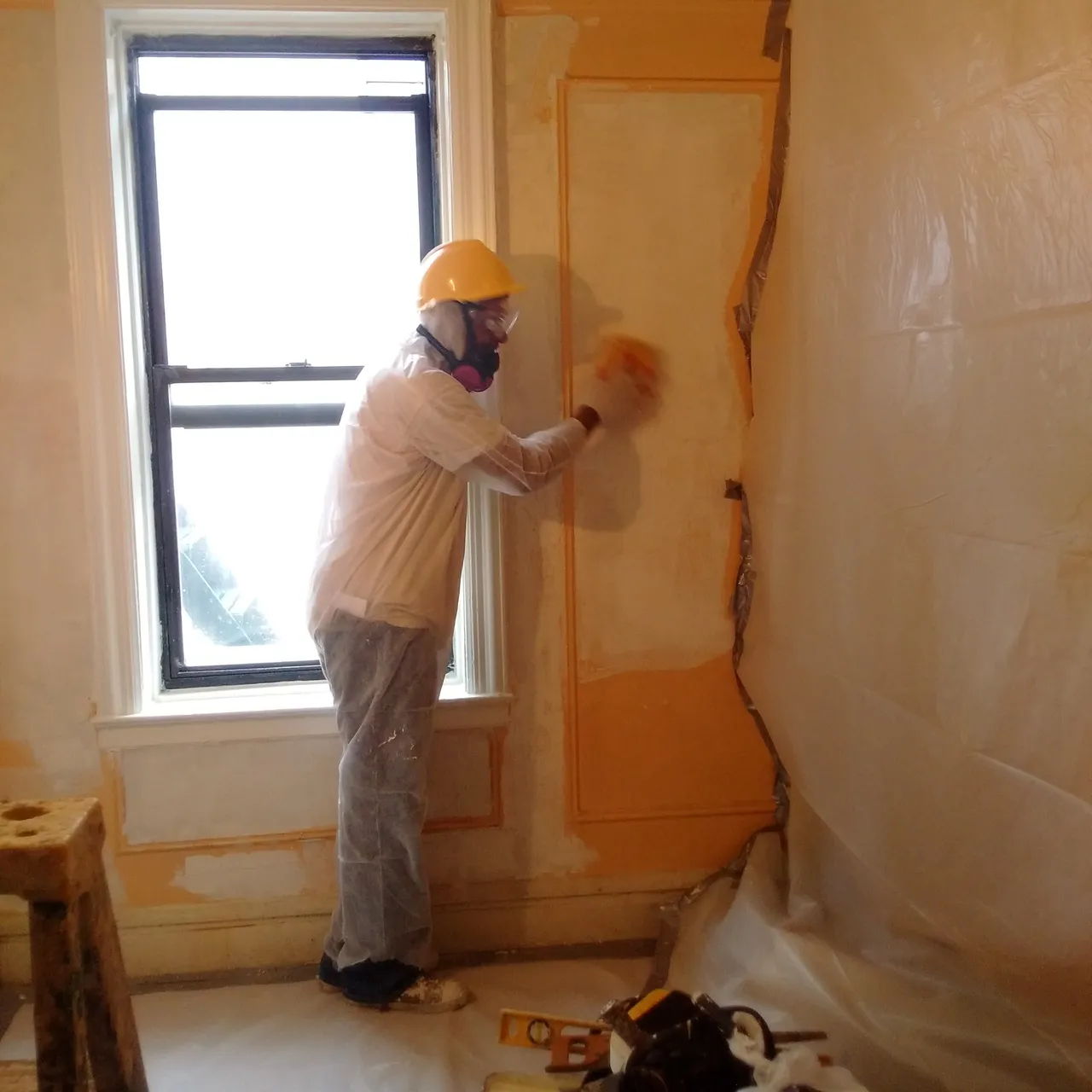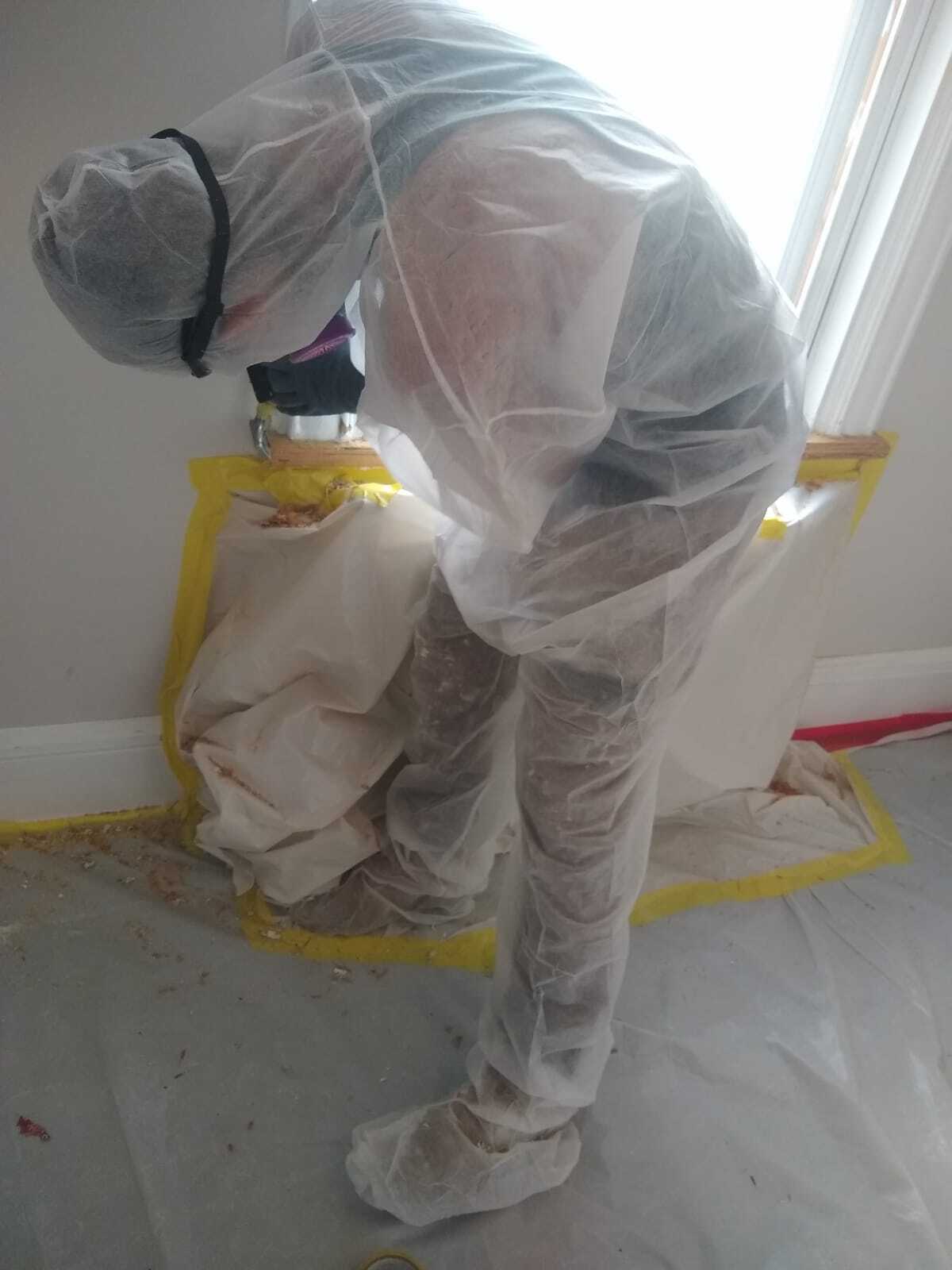NYC Lead Paint Removal Company-- Making Certain Safe and Legal Conformity
Wiki Article
Best Practices for Making Certain Safe and Complete Lead Violation Reduction
Attending to lead violation abatement requires a multi-faceted technique to make sure both safety and security and compliance. Preliminary assessments utilizing innovative discovery techniques such as XRF analyzers established the phase for a precise understanding of contamination levels. Incorporating correct containment strategies, consisting of closed obstacles and HEPA filtering, paired with using individual protective devices (PPE) for employees, creates the foundation of a safe operation. Thorough cleaning protocols, featuring HEPA vacuuming and wet-wiping, are vital. It's the final clearance process, including comprehensive inspections and research laboratory testing, that absolutely verifies a lead-free setting, ensuring long-term safety and security. How do these methods interconnect to assure extensive lead reduction?
First Assessment
Carrying out a first evaluation is an essential first action in lead infraction reduction. This stage includes a thorough examination of the property to recognize the visibility, level, and particular locations of lead-based hazards. Qualified experts, such as qualified lead inspectors or take the chance of assessors, should perform an extensive site inspection, using tools like X-ray fluorescence (XRF) analyzers to properly detect and gauge lead focus in paint, dust, soil, and water.The evaluation must additionally consist of a testimonial of the structure's history, previous records, and any kind of problems or health and wellness concerns reported by occupants - Lead Removal Contractors. Documenting the searchings for meticulously is necessary, as these records create the basis for developing an effective abatement technique. A complete evaluation likewise includes sampling and lab evaluation, which are vital to validate the visibility of lead and guide succeeding activities
Moreover, it is critical to connect the outcomes transparently to all stakeholders, consisting of property owners, renters, and regulatory authorities. By making sure that the preliminary evaluation is performed with precision and roughness, experts can lay a solid foundation for a targeted and reliable lead reduction procedure, inevitably guarding public health and guaranteeing conformity with regulative standards.
Correct Containment
Proper containment is vital to prevent the spread of lead impurities during reduction activities. Properly handling control decreases the risk of lead dust and debris moving to non-work locations, thus protecting both the atmosphere and individuals outside the immediate work zone.
Routine assessments of the control location are required to inspect for breaches or weaknesses in the obstacle. Any kind of determined issues ought to be quickly resolved to maintain the honesty of the containment. By sticking to these practices, abatement jobs can effectively control lead contamination and reduce connected wellness threats.
Employee Protection
Making sure worker security is critical during lead abatement projects to avoid work exposure to hazardous lead fragments. Vital steps consist of making use of individual safety devices (PPE) such as respirators, gloves, and full-body matches particularly created to block lead dirt and fumes. Employees should undertake comprehensive training on the proper use and maintenance of PPE, including healthy screening for respirators to guarantee optimum effectiveness.Engineering controls, such as neighborhood exhaust ventilation systems, are vital in reducing airborne lead focus in the workplace. Administrative controls ought to additionally be implemented, including limiting the duration of exposure and revolving workers to reduce specific exposure times. Normal clinical monitoring and organic tracking are important for very early detection of lead absorption, enabling timely intervention and therapy.
Moreover, establishing a decontamination method is vital. Workers have to comply with rigorous decontamination procedures before breaks and at the end of their shift to avoid lead dirt from being lugged outside the workplace. This consists of complete hand and face cleaning with lead-specific cleaner and transforming out of contaminated apparel.
Thorough Cleaning
Maintaining a safe job environment prolongs past employee security and includes precise clean-up to make sure lead fragments are extensively eliminated from the site. The process of thorough clean-up is crucial in avoiding the recontamination of the eased off location and safeguarding both present and future owners.To achieve a detailed clean-up, all workspace need to be methodically sanitized. This involves using specialized HEPA (High-Efficiency Particulate Air) hoover and wet-wiping methods to capture and get rid of great lead dirt that might have picked surfaces. It is necessary to cleanse all horizontal surfaces, consisting of floors, home window sills, and countertops, as well as vertical surface areas that might have caught lead bits.
Workers need to use suitable individual safety equipment (PPE) throughout cleaning to link avoid exposure to residual lead dust. Used cleaning products such as wipes, sponges, and mop heads must be thrown away in conformity with dangerous waste disposal laws.

Final Clearance
Final clearance is the crucial wrapping up phase of lead abatement that identifies whether the website is safe for reoccupation. This critical action entails extensive assessment and screening to verify that all lead hazards have been successfully gotten rid of.
Last clearance testing not just protects future passengers but additionally makes certain conformity with neighborhood, state, and government regulations. In addition, it functions as a documented validation of the reduction specialist's adherence to industry ideal methods. Making sure an extensive and successful last clearance is essential in securing public health and cultivating count on in the abatement procedure.
Conclusion
Making sure secure and detailed lead violation abatement requires a multifaceted strategy incorporating preliminary evaluations with innovative discovery approaches, effective control methods, stringent worker security protocols, and careful find more info cleanup procedures. The final clearance phase, including comprehensive examinations and lab screening, is critical to find more verify conformity with EPA criteria. Adherence to these finest methods ensures a secure environment for occupants, reduces wellness risks, and maintains regulatory requirements, therefore promoting public health and safety in lead-affected areas.Report this wiki page